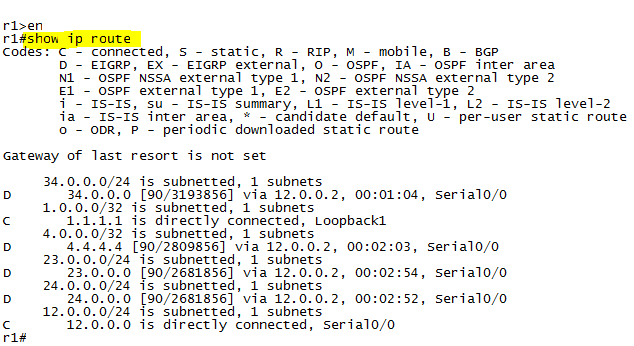Hello Friends it may be possible in many cases that you want your cisco router to be configured with a password so that no outsider can make access to your cisco router in this post i'm going to describe the procedure of configuring password on a cisco router
Types of Passwords on Cisco Routers
- 1. Line Passwords
- 2. Privileged mode Passwords (enable mode )
- 3. Username Passwords ( Optional )
First we will understand these Passwords that where do they work.
1. Line Passwords
Console Line - The console is the main serial administrative port on a router. This is where you configure the router when it is new and has no network configuration.
Aux Line – The aux line is an auxiliary port. Like the console, it is a physical port on every router. You can think of it as a backup console port. Besides being a backup console port, the aux port is periodically used for administrative console dial up access to the router.
VTY Lines – Vty lines are “virtual tty” lines and are used when you connect to the router via telnet or ssh. These are not physical lines on the router but virtual “inbound network lines”.
Async Lines – Async lines are asynchronous serial lines and are optional. These async lines are created when you insert an async serial card in a router. You can use the async serial lines to connect dumb-terminals (text-based terminals), serial printers, or modems.
All of these different lines need a password configured on them. Let’s find out how to configure Cisco router line passwords.
Configuring Cisco Routers with Passwords
Enable Password
To configure enable password on cisco router turn on your cisco router and go through the following commands :
Maati>enable
Maati#configure terminal
Maati(config)#enable password your password
Maati(config)#exit
Screenshot of My router CLI :
we can see the enable password configured on a cisco router by using the #show run command if you want your enable password to be encrypted you should use the folloing steps insted
Maati>enable
Maati#configure terminal
Maati(config)#enable secret your password
Maati(config)exit
Screenshot of My Router CLI :
Console Password
now we will learn how to configure the console password , for console password we will use two commands one for setting password and second to enable console password at the time of login through console. Here is the set of commands you need to follow to set console password.
Maati>enable
Maati#configure terminal
Maati(config)#line console 0
Maati(config-line)password your password
Maati(config-line)login
Maati(config-line )exit
Screenshot Of My Router CLI :
Telnet Password
In case you are not at your office and hence no console access to your Cisco router then you can access your router remotly, and you must set a telnet password on your cisco router so that no one else can access your cisco router remotly.
Following is the set of commands used to set telnet Password on Cisco Routers.
Maati>enable
Maati#configure terminal
Maati(config)#line vty 0 15
Maati(config-line)password your password
Maati(config-line)login
Maati(config-line)exit
Screenshot My cisco Router CLI :
Username and Password
There may be case when you want people to have access to your router so you can set username and password on your router for diffrent users.
Following commands are used to set the same :
Maati>enable
Maati#configure terminal
Maati(config)#username username privilege 15 password your password
Maati(config)#username user1 password cisco
Maati(config)#line console 0
Maati(config-line)#login local
Maati(config-line)#line vty 0 15
Maati(config-line)#login local
For any Questions please comment your question below...
























.png)






